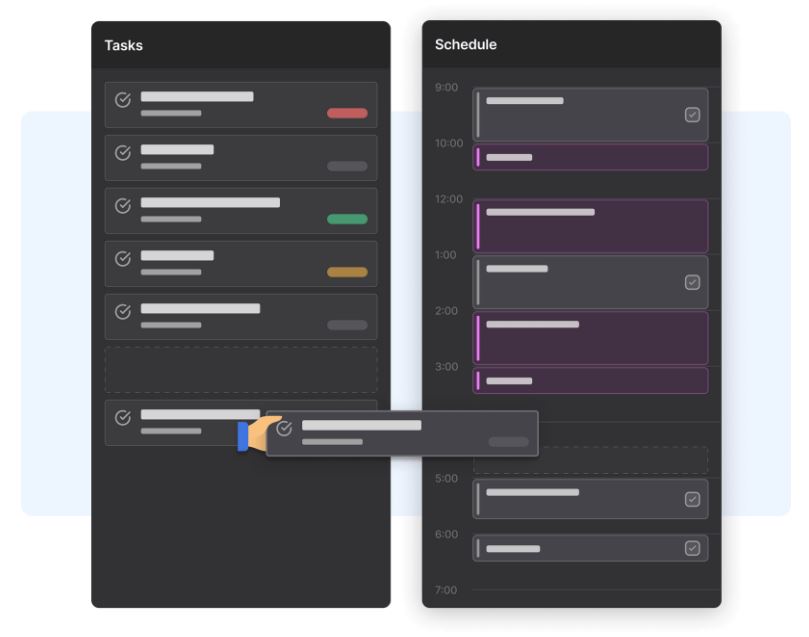Master the Art of Task Management with The Path of Least Resistance!
What is The Path of Least Resistance?
The path of least resistance isn’t about finding the easiest way out, but rather about breaking down complex situations into manageable tasks. It’s a strategy that works well with our natural tendencies rather than against them, which is why it’s often used as a way to deal with overwhelming situations, such as ADHD Time Blindness.
The Swiss Cheese Model Explained
The Swiss Cheese model, as a concept, is a method of managing large tasks by focusing on smaller, more manageable tasks – much like the holes in Swiss cheese. You take a large piece of paper and make multiple dots everywhere. This piece of paper represents the big, overwhelming task and each hole, like in the Swiss cheese signifies, smaller parts of the whole task. You then write next to each hole the small task that is required which is for a manageable time and effort, compared to the ultimate project.
Correlation Between ADHD and Overwhelming Tasks
ADHD, or Attention Deficit Hyperactivity Disorder, often makes tasks seem more overwhelming than they are. This is because people with ADHD typically have difficulties with executive functions, making it hard for them to plan, focus, and execute tasks. This is also known as ADHD Time Blindness. The path of least resistance can make these tasks less daunting.
Applying the Path of Least Resistance to ADHD Time Blindness
Why the Swiss Cheese Model Works for ADHD Time Blindness
The Swiss Cheese Model is highly effective for managing ADHD. It simplifies tasks, allowing individuals to tackle them piece by piece, thus reducing the anxiety and pressure that often come with overwhelming tasks.
Breaking Down Big Tasks
Breaking down a big task into smaller, more manageable parts can make it feel less intimidating. This approach allows you to focus on one small task at a time, making the whole project more manageable.
The Power of Small Wins
When you complete these smaller tasks, it gives a sense of accomplishment, which can motivate you to continue and tackle the next task. This process of achieving “small wins” can have a cumulative positive effect on your mental state.
Real-Life Examples of The Swiss Cheese Model in Action
Imagine you have a presentation to prepare. Instead of viewing it as one big task, break it down. Researching, drafting, creating visuals, rehearsing, and final editing can be seen as individual tasks. This way, each task feels less overwhelming and more manageable.
Implementing The Swiss Cheese Model
Step-By-Step Guide to Using The Swiss Cheese Model
Identifying Your Main Task
The first step is to identify the task that feels overwhelming. Once you have this in mind, you can start breaking it down.
Creating Your Own Swiss Cheese Paper
Next, visualize this task as a block of Swiss cheese. Each hole represents a smaller part of the task. Write these down next to each hole, focusing on the ones you can easily tackle first. A whiteboard or a planner with holes already in it can be perfect for this. A whiteboard in a bedroom (especially for students during exam times) is more visual which has helped many clients from young students, university students and adults.
Tackling the Smallest Task – the path of least resistance
Start with the smallest task. Once you finish it, you’ll feel a sense of accomplishment, which can propel you to tackle the next task, and so on.
Moving to a Digital Swiss Cheese Model – The Magnetic Whiteboard
If you’re more inclined to use digital tools or prefer a reusable option, a magnetic whiteboard can work just as well as paper for the Swiss Cheese Model. In a previous blog, we’ve discussed the merits of using a magnetic whiteboard. You can easily write your tasks and erase them as you complete them. It serves as a visual reminder of your tasks, and the satisfaction of erasing a completed task is highly motivating.
Tools to Assist through the Path of Least Resistance
Best Tools for Task Management ($0-$50)
Applications and Software
There are numerous applications and software that can help manage tasks, such as Motion, Trello, Asana, and Todoist. My son and I like Motion as it moves tasks into the Calender and then rearranges them if something is given priority. You can include Time Blockers/Buffers automatically giving you extra time for small tasks, just in case. It’s a seamless AI assistant which is something he and I will always need, especially when he goes to University.

Motion – There are now 13 months in a year.
Motion increases productivity by 137%
With automation and AI that intelligently plan your day, schedule meetings,
And build the perfect to-do list.
Physical Products
You can also use physical products like a simple notebook or a planner. These range from $5 to $20.
High-End Tools for Task Management ($50 and above)
For those with a bigger budget, project management software like Monday.com and productivity gadgets like Timeular can be very helpful.
Conclusions and Final Thoughts
Overcoming ADHD Through the Path of Least Resistance
The path of least resistance, particularly the Swiss Cheese Model, can be highly effective for managing ADHD Time Blindness. By breaking down big tasks into smaller, manageable ones, you can lessen the overwhelming feeling that often accompanies big projects.
Why Consistency Is Key
Remember, consistency is the key. Continually applying this method will not only help you manage your tasks but will also help you develop habits that can benefit you in the long run.
FAQs
- Can the Swiss Cheese Model be applied to any task? Yes, it can be applied to any task that can be broken down into smaller, manageable parts.
- Are there any other methods similar to the Swiss Cheese Model? Yes, there are many other methods like the Pomodoro Technique and Time Blocking (as in the Use Motion App) that also focus on breaking down tasks.
- How does the Swiss Cheese Model help with ADHD? The Swiss Cheese Model helps by making tasks seem less overwhelming and more manageable, which can be particularly beneficial for people with ADHD who struggle with large tasks.
- What tools can I use to help with the Swiss Cheese Model? Numerous tools ranging from simple notebooks to advanced software can be used to help implement the Swiss Cheese Model.
- Is the Swiss Cheese Model scientifically proven to work? While there may not be scientific studies on the Swiss Cheese Model per se, the concept of breaking down tasks into manageable parts is well-established in cognitive psychology and is considered effective in managing tasks.

*We may earn a commission for purchases made using our links. Please see our disclosure to learn more.





Comments are closed.